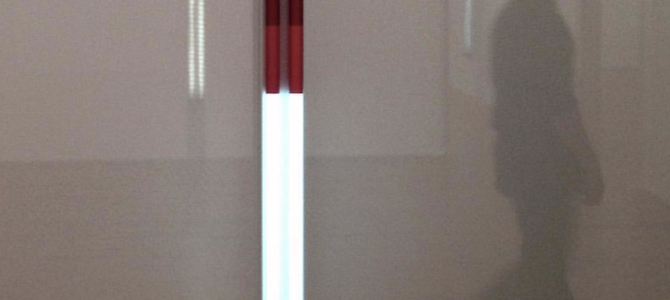
A World War II anecdote about Winston Churchill and Adolf Hitler illustrates their vastly different approaches to the realities of wartime devastation. It is said that after a blitzkrieg, Churchill would walk amid the rubble of London and survey the damage firsthand, while after Allied bombs had wreaked havoc on Berlin, Hitler would be chauffeured around the city in a car with its shades drawn. One leader gazed directly at stark reality; the other viewed it through a scrim, if at all.
The scrim is an apt analogy for visualizing the behavior of those who simply refuse to acknowledge unpleasantness. In ballet, the scrim is a stiff curtain of gauze or netting that can be either relatively transparent or quite opaque depending on how light is focused on it.
Some of the actions of a ballet can be played out in front of the scrim with scenery projected onto it while nothing of what’s on stage behind is visible at all — quite useful for complete set changes. At other times, the stage set behind the scrim is revealed through its gauzy texture, providing the audience with only a hazy, tantalizing glimpse. Either way, as long as the scrim hasn’t been lifted, the audience sees what’s behind it only through a filter of varying degrees of clarity.
The scrim is a metaphor for denial, or, if one wants to be generous, for wishful thinking. Of course, one needn’t be generous, and perhaps shouldn’t be, because the end result of either denial or wishful thinking is pretty much the same: Too often, behind the pleasant scenery of the filter is a wretched reality of often horrifying proportions.
The Scrim of Soviet Russia
Consider the famines that took place in Russia in the early part of the 20th century and the sorts of responses they generated. As most people know by now, these famines, brought about by policies Lenin and Stalin imposed in the ’20s and ’30s, respectively, were so devastating that millions of Russians starved to death. How could masses of starving people have perished in such gruesome fashion unseen? Were there no eyewitnesses to document the horror for posterity?
As time passed, however, written accounts describing this catastrophe began to surface, Aleksandr Solzhenitsyn’s perhaps the most famous. Googling “Russian famine” for each of the time periods unearths an abundance of contemporary photographs, with subject matter grotesque enough to make you lose your lunch.
The abundance of documentation testifies to the determination of the then-communist government to tell a very different Russian story. To do so, they often staged a “reality” solely for visitors to preserve — and hopefully propagate — the vision of Russia they wanted the world to see, which was an illusion of fantastic proportions. Unfortunately, and to their everlasting shame, too many of these observers were willing to credit the reality in front of the scrim despite the many protestations that there was an entirely different scenario playing out behind it.
Worse still, occasionally the scrim is not constructed by those with ulterior motives to fool unwitting observers but is self-fashioned by people adamantly opposed to acknowledging anything at odds with their own agenda. This was most assuredly the case with Soviet Russia, which had a staggering number of apologists within the United States alone who fervently encouraged the myth that all was well. Throughout the years, communist sympathizers have existed in large numbers despite overwhelming written and photographic evidence of the massive human suffering this pernicious ideology has produced wherever it has taken hold.
Embrace Reality
In America, these willful deniers of orchestrated misery are successfully aided by what the late Andrew Breitbart referred to as the Democrat-media complex. If the media choose to bury a story that contradicts the narrative to which they maintain allegiance, they will, usually successfully. Thus the scrim that obstructs people’s access to reality remains unthreatened. But Breitbart had hoped that the citizen journalist, armed with his or her phone, would be able to level the playing field by producing evidence the media couldn’t ignore.
Sadly, as the riots in recent months have revealed, large numbers of American citizens, as well as numerous elected officials, simply refuse to give credence to a reality we couldn’t shut out even if we wanted to. We’re so bombarded with images of raging mobs, arson, looting, brutal beatings, and even murders. Yet despite the ubiquity of these images, in response to a question about Antifa rioting in Portland, Rep. Jerry Nadler, D-N.Y., responded with, “That’s a myth that’s being spread only in Washington, D.C.”
That response should leave any reasonable person flabbergasted, but based on the evidence from social media, a large number of Americans actually subscribe to this view of things. The deniers of these savage assaults refuse to acknowledge the existence of what they’ve been able to witness virtually unfiltered.
Why? Ideological commitment is the real lens through which they see. Ideology is the scrim, and according to many philosophers, that’s just how it is. If you walk around wearing the mantle of concern for the downtrodden, however, at some point you’re obligated to address why your brand of social justice allows you to dismiss outright the suffering of your fellow man.








